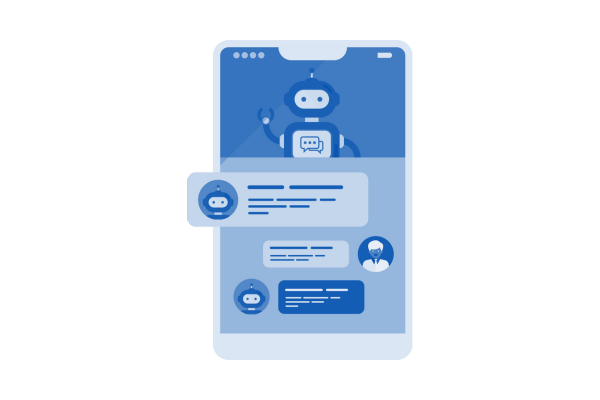Written by Jes D.A.
How Can I Use AI in My Writing?
In writing, the use of generative AI—a technology both transformative and dangerous—requires careful consideration.
Current acceptable uses of AI in writing include the following:
- To facilitate literature reviews as part of identifying gaps in current research
- To help locate potential new sources for subsequent review and evaluation
- To support the writing and revision process (but not to generate an entire document, except in particular circumstances)
Note that AI is almost always acceptable as a supporting tool and never as an autonomous solution.

How Do I Fix Common AI Writing Problems?
AI Writing Problem #1: Hallucinations
- Generative AI can completely fabricate information and provide incorrect and unsupported data, even citing and referencing nonexistent sources and publications.
- Generative AI may provide outdated information; indeed, AI cannot provide any recent information, studies, or breakthroughs that are not found in the AI model's training data, so current AI models are permanently behind the times. For example, if an AI was trained on data up to the summer of 2021, no material after this point can be considered when generating a response to a prompt.
- Generative AI can also create text or content that is severely biased or even offensive, either via hallucinations or the repetition of problematic online content.
Scribendi Editor Solution:
Scribendi editors look for sources that are unverifiable in order to help writers guard themselves against AI hallucinations.
AI Writing Problem #2: Logical Issues
Generative AI tools cannot think; they can neither create new ideas nor accurately synthesize materials to draw new conclusions. By their nature, they cannot provide the original material necessary to meet the standards of original writing, as they merely reformat previously published material or hallucinate content to fit a prompt.
Scribendi Editor Solution:
Scribendi editors are experienced in detecting claims or conclusions from AI that seem illogical, unclear, or contradictory so you can address them.
AI Writing Problem #3: Changed Meaning
While generative AI can help with language concerns in the drafting and revision stages, there is a risk that it can change the intended meaning of text. Generative AI cannot understand an author's intent, only patterns in the text that it was trained on, and it can thus change the meaning of sentences, perhaps drastically, so care should always be taken if generative AI is used.
Scribendi Editor Solution:
If a client has used AI to support their work but the end result seems unclear or problematic, an editor can help identify these problems.
AI Writing Problem #4: Privacy Breaches
There are data security and privacy risks when uploading content via prompts to generative AI. Certain materials should never be uploaded. Data arising from human research participants (e.g., personal information or any information that could be used to identify an individual or group) should not be included in a prompt, as the data may be exposed to and subsequently shared with others, violating both research and data security standards.
Confidential information (e.g., contractual, financial, or security information) related to a study, project, person, group, business, or institution should never be uploaded. Breaching non-disclosure agreements and data security legislation could have serious academic, legal, and financial ramifications. Before uploading any material to generative AI, a thorough risk assessment should be conducted.
Scribendi Editor Solution:
Scribendi editors can help identify if a client has used AI in a way that is problematic in terms of data privacy and security. This is especially helpful in checking for liability issues.
AI Writing Problem #5: Copyright Problems
While the legal landscape in relation to generative AI is still evolving, it's clear that authors are responsible, both academically and legally, for the work they produce with the aid of generative AI, including any libel or infringement of intellectual property rights or copyrights.
Scribendi Editor Solution:
Scribendi editors can help writers check whether AI has been used in a way that might clearly and specifically put them at risk of violating copyrights or intellectual property rights.
What Is Scribendi's Policy on AI Writing?
To protect academic integrity, Scribendi provides services only for work that utilizes generative AI in an acceptable manner. The unacknowledged use of generative AI should always be avoided, and generative AI should not be used to create unconfirmed content.
This involves the following requirements:
- Describe AI use: The use of generative AI should be carefully described to ensure transparency and reproducibility.
- Reference AI use: If specific content or ideas from generative AI are used, they need to be cited and referenced, as with any source.
Overall, we believe that written documents should be the original work of the author and not that of generative AI; the thoughts, ideas, and arguments should be those of the author. This is because content drawn from generative AI has a high level of risk: it may be a fabrication (an AI "hallucination"), objectively incorrect or unsupported, or the unacknowledged work of others, violating copyrights and intellectual property rights.

Does My Editor Use AI to Improve My Writing?
Editing has been no exception to the innovations allowed by technological advances. Many modern writing tools rely on AI to revise language.
Knowing the incomparable value of human editors in revising all the fine nuances of language, Scribendi keeps them at the center of the editing equation. This ensures that your writing remains not only human but also uniquely yours. At the same time, Scribendi embraces innovation and understands the incredible power of technology to enable humanly impossible rates of speed and precision.
As such, instead of creating tools to replace human editors, Scribendi has focused on creating tools to help them perform more efficiently at the same high quality. Using the powers of AI and natural language processing, Scribendi put intensive work into developing its first AI-powered tools, including the Scribendi Accelerator, which outperforms similar technologies in the field.
What Is the Scribendi Accelerator?
The Accelerator is an automated editing tool that identifies errors in grammar, syntax, and punctuation. Like other automated editing tools, it provides suggestions for corrections at the sentence level of a document. After running the Accelerator, an editor reviews its suggestions, makes further revisions, including content revisions, and provides helpful feedback to the author.
By handling repetitive tasks at maximum efficiency with unmatched accuracy, the Scribendi Accelerator allows editors to focus on the more creative aspects of editing. While providing a thorough spelling and grammar check, Scribendi's editors also improve your writing in other ways, including working on its overall composition. While some AI technologies can ensure that your writing is technically correct, only a human editor can provide the feedback necessary to ensure your writing is the best it can possibly be.
When paired with a Scribendi editor's unmatched experience and education, the Accelerator's ability to ensure accuracy and consistency has proven to be powerful, thereby ensuring consistent high-quality editing. Unlike similar grammar error correction tools available to consumers today, the Accelerator's quality performance is unmatched. Most notably, the Accelerator was designed to be a professional-grade editing tool capable of assisting highly trained editors in their work.
It is important to note that this tool is not generative AI, such as ChatGPT, but rather a predictive AI tool that utilizes machine learning to assist editors with editing and proofreading. Scribendi AI does not operate independently from a human operator and cannot directly make any changes to a document.
We guarantee that every document submitted to Scribendi for proofreading or editing is fully edited by a human editor and that we never run text through an AI checker without human oversight. Scribendi AI simply helps editors to efficiently find potential issues, such as grammar, punctuation, and spelling errors, allowing them to quickly consider options, make changes, and return an order in a timely manner.
Conclusion
Just as the finest artists use only the best tools to craft masterpieces, writers and editors should only use the most innovative technology to draft high-quality writing. Taking the best of both the modern and traditional editing spheres, Scribendi has crafted a unique experience for writers and editors worldwide.
It doesn't stop here. As an innovator in the field of AI, Scribendi is continuing its development of the Accelerator and other AI technologies.
Make Every Word Count. Hire a Professional Editor.
Try Our ESL Academic Editing Service, or Get a Free Sample
About the Author
Jes is a magician and a mechanic; that is to say, she creates pieces of writing from thin air to share as a writer, and she cleans up the rust and grease of other pieces of writing as an editor. She knows that there's always something valuable to be pulled out of a blank page or something shiny to be uncovered in one that needs a little polishing. When Jes isn't conjuring or maintaining sentences, she's devouring them, always hungry for more words.




